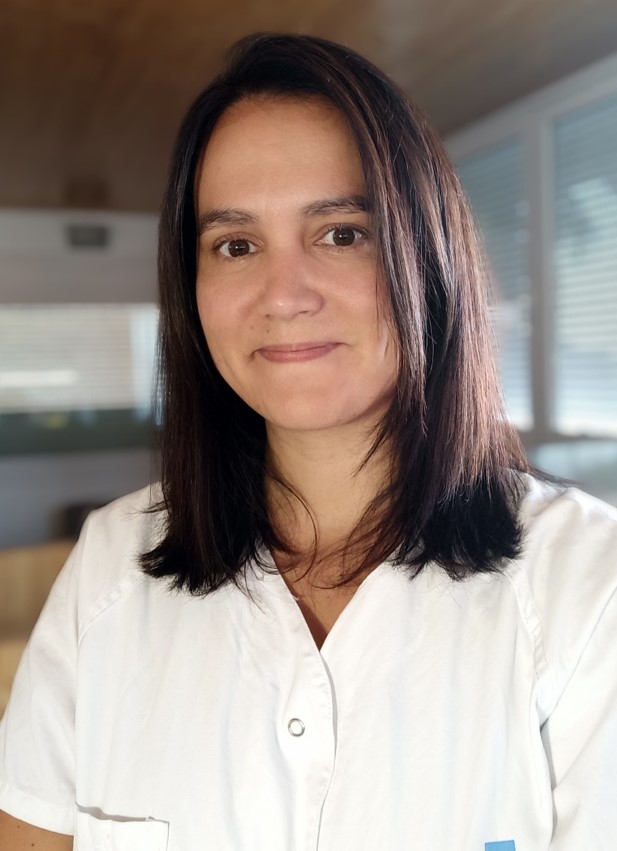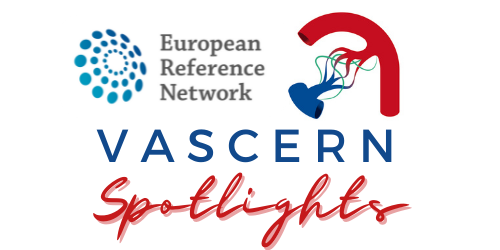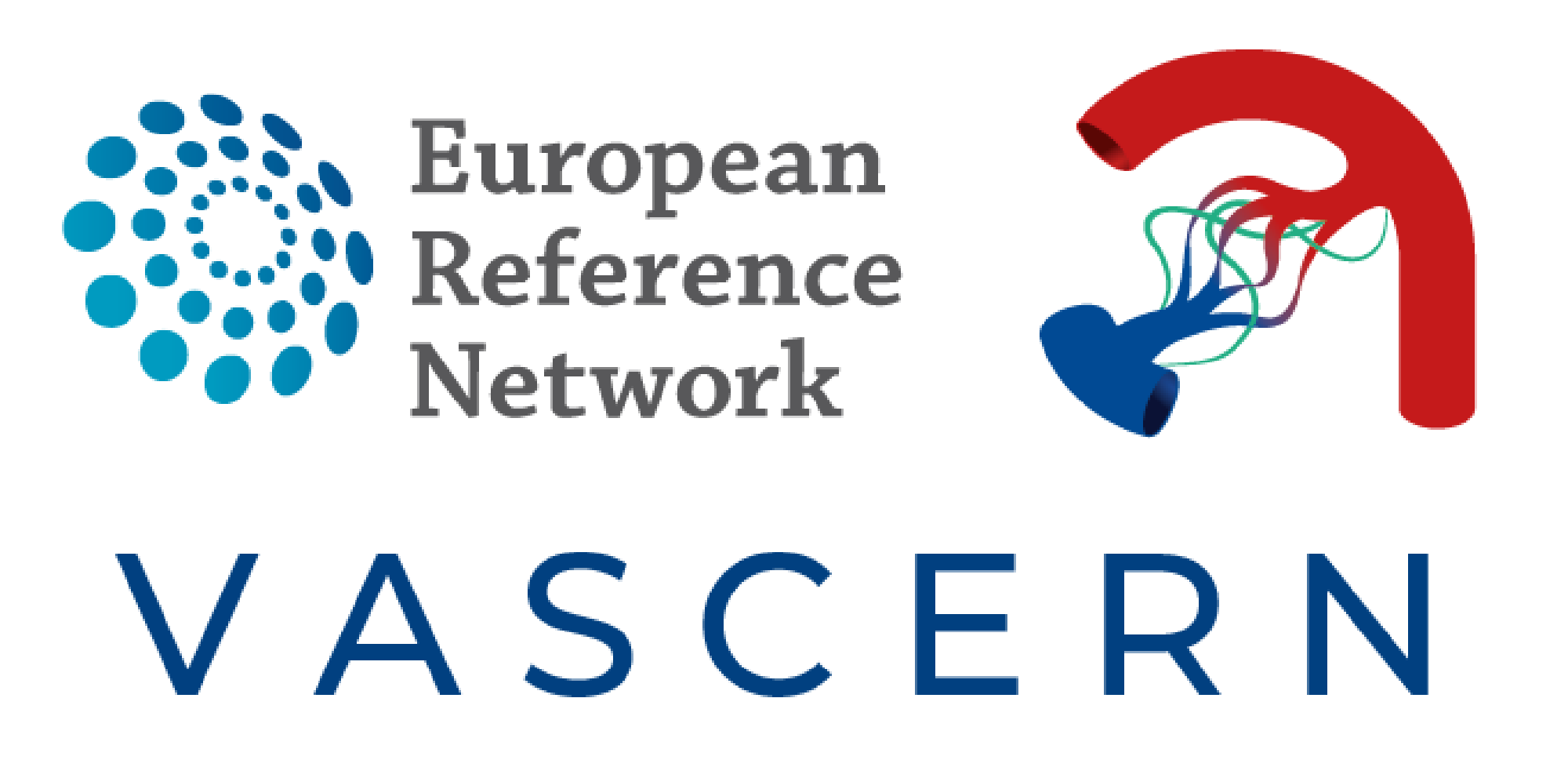

In our first VASCERN Spotlights interview of 2022 we are thrilled to interview Dr. Gisela Teixido from the Hospital Universitari Vall d’Hebron in Barcelona, Spain, one of the new full Healthcare Provider (HCP) members as of January 1st, 2022. Dr. Teixido is member of the Heritable Thoracic Aortic Diseases Working Group (HTAD WG) and shares what she feels are VASCERN’s greatest accomplishments to date, her current research activities in the field of genetic aortic diseases and her hope for health equity for all rare disease patients in Europe.
1. What is your medical specialty and what interested you in this field?
I am an adult cardiologist and I am specialized in cardiac imaging and aortic diseases. It was while I was finishing my residency in 2008 that I got involved with the patients at the Marfan unit of Hospital Universitari Vall d’Hebron and it was at that time that I collaborated with Dr. Evangelista, who also participates in VASCERN. At the beginning we saw mainly Marfan syndrome patients but our center has now grown into a genetic aortic disease unit as we now also see patients with other aortic diseases including non-syndrome aortic genetic diseases and Loeys-Dietz syndrome. Today I am the clinical coordinator of the unit.
2. How did you become involved in VASCERN?
As my group, led by Dr. Evangelista, was involved in many research activities and collaborated already with Professor Guillaume Jondeau (VASCERN coordinator) and other members of VASCERN’s HTAD-WG, we were naturally very interested in joining the network. First we applied and were accepted as Affiliated Partners in August 2019, which allowed us to participate actively in the meetings and projects of VASCERN. Then when the 2019 call for new members to join the existing 24 ERNs came out we applied to become full HCP members and we are now very happy to have officially joined as a full HCP member of VASCERN at the start of this year.
VASCERN needs to continue extending its geographical coverage and reaching out and supporting these less represented countries so that they can become involved in the ERN for the benefit of all patients.
3. What is your greatest hope for VASCERN?
I think VASCERN has done a great job in establishing cooperation between the centers of expertise in Europe for both clinical and research activities. My hope is that we can spread this expertise throughout Europe, in order to include countries that have different health systems and different economic resources because I think that representation has to be equal for all European countries so that all patients have access to the same level of care. VASCERN needs to continue extending its geographical coverage and reaching out and supporting these less represented countries so that they can become involved in the ERN for the benefit of all patients.
4. What challenges do you face as a healthcare professional in the rare disease field?
One of the challenges is to spread knowledge and awareness of rare diseases, not only to patients and the patient community but also to the non-expert medical community, as these are rare diseases so it is not common for doctors to be aware of or have a lot of information on these diseases. I do think that awareness has improved in the past few years, at least in Spain, but there is still work to do. Another challenge is the difficulties that we all experience when it comes to the management and organization of clinical systems in terms of resources, but which is compromised because of the geographical distance between patient’s residence and the expert center. Organizing the various appointments that are needed for a patient’s multidisciplinary care all on the same day can be very challenging. As Spain is a big country and expert centers are spread across the country, some rare vascular disease patients can also find it hard to reach the expert centers for their exams and tests. What has helped has been the increased use of technology which has allowed us to do more virtual consultations and follow-ups. That would be one of the few positive points to have come out of this COVID-19 pandemic.
I am also very privileged to have a position where I can mix both clinical duties and research activities, as for me this is what makes me happiest: applying research to clinical activities and seeing the positive results in our patients.
5. What have you accomplished in your medical career that you are most proud of?
I would say the establishment of the Marfan clinic is something I am proud of. I was there from the beginning with Dr. Evangelista and I have had the satisfaction of seeing the unit evolve and see our number of patients grow (our patient numbers have doubled over the past few years). I am also very privileged to have a position where I can mix both clinical duties and research activities, as for me this is what makes me happiest: applying research to clinical activities and seeing the positive results in our patients.
6. Are you currently involved in any research projects or clinical trials? If so can you please describe them briefly?
Luckily at our institution we conduct many research activities! We are about to start a project on physical activity in Marfan syndrome patients, something I have not done before. I am very interested in seeing the results of this as I believe physical activity will improve their quality of life and their vascular prognosis. We are also doing studies on advanced imaging techniques such as 4D flow Magnetic Resonance Imaging (MRI) and semi-automatic analysis of CT or MRI images for the analysis of the prognosis and evolution of aortic diseases. We have published some articles on Marfan and Loeys-Dietz syndrome using these advanced cardiac imaging techniques. We are also now working within a Spanish network (non-official designation) on genetic aortic diseases, which we have formed based on the centers we know and meet at national medical congresses, so that we can share news and activities from VASCERN to other Spanish centers and so that we can create registries and studies together. Other studies on biomarkers and the basics of Marfan syndrome and genetic aortic disease are also underway with other Spanish centers.
The way we have been able to motivate experts to give their time and be active in this endeavor is something to be proud of. VASCERN is working well and all the activities and documents created are the products of this success.
7. What VASCERN activities do you participate in and which are your favorite?
I am a member of the HTAD-WG and I participate in the monthly meetings as well as the face to face meetings and have attended several annual VASCERN days (including VASCERN Days 2021). I am actively involved in the Pills of Knowledge (PoK) and the Aortic Imaging projects in the HTAD WG. My favorite activity however is the clinical case discussions with the other members of the HTAD WG as these are the top experts in the field so when we discuss patient cases we all learn a lot from each other. Similarly, when we discuss guidelines or consensus statements, people provide their opinions, experience and inputs and it benefits us all.
8. What are the main achievements of VASCERN to date? What challenges does VASCERN still face?
The creation of VASCERN itself is a huge achievement and the fact that it is growing and producing lots of valuable outputs is wonderful. Also, the way we have been able to motivate experts to give their time and be active in this endeavor is something to be proud of. VASCERN is working well and all the activities and documents created are the products of this success.
The main challenge, as I mentioned, is ensuring the inclusion of underrepresented countries in the ERNs. Smaller countries and counties with less health structures in place need to be properly represented and this is something we need to actively work on – reaching out to these countries, so that we are reaching the rare disease patients in these countries. It is so important to achieve health equity for all rare disease patients in Europe and the ERNs have a very important role in making this a reality.


